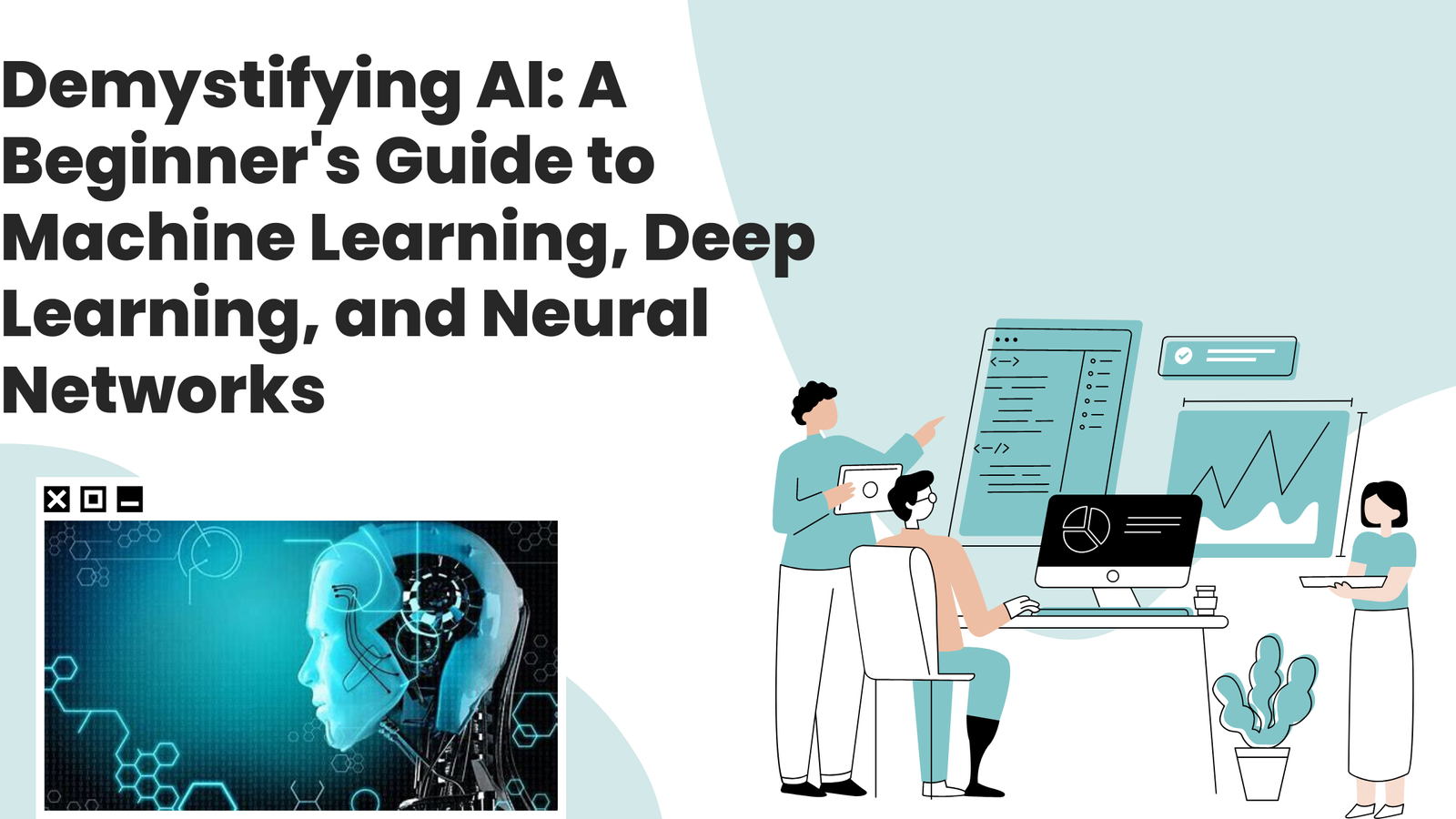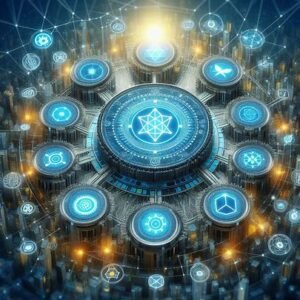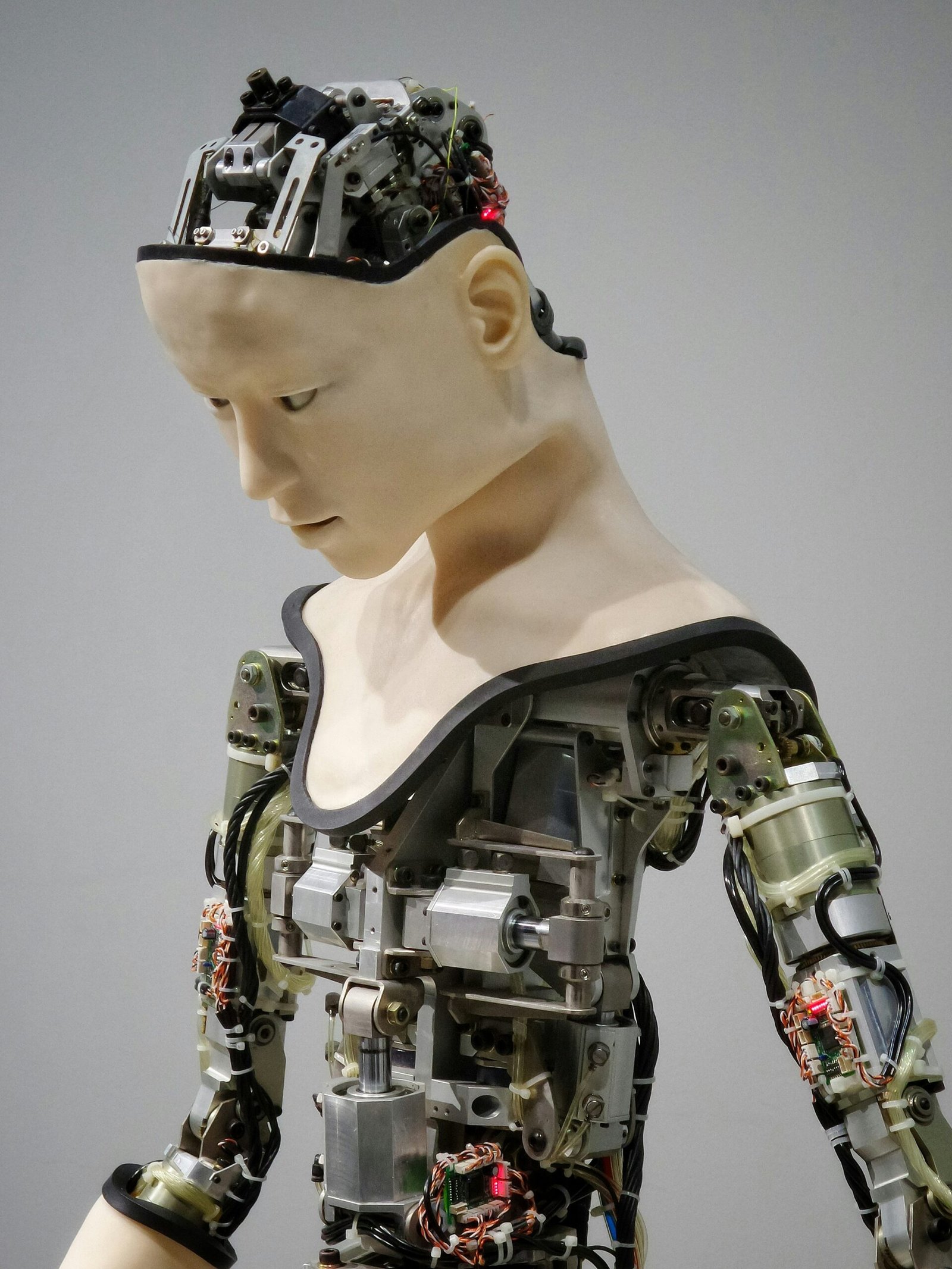Demystifying AI: A Beginner’s Guide to Machine Learning, Deep Learning, and Neural Networks

Artificial Intelligence (AI) has become a buzzword, often shrouded in complexity. But at its core, AI is about enabling machines to learn and make decisions without explicit programming. Let’s break down three key concepts: Machine Learning, Deep Learning, and Neural Networks.
What is Artificial Intelligence (AI)?
AI is the broader concept of creating intelligent agents, systems that can reason, learn, and act autonomously. Think of it as the overarching goal.
Machine Learning: Teaching Computers to Learn
Machine Learning (ML) is a subset of AI that focuses on teaching computers to learn from data without being explicitly programmed. Instead of writing detailed rules, we provide the machine with data and let it find patterns.
How does it work? Imagine teaching a child to recognize a cat. You show them pictures of cats and say, “This is a cat.” Over time, the child learns to identify cats based on their features. ML algorithms work similarly. They are fed data, and through complex mathematical calculations, they learn to identify patterns.
Types of Machine Learning:
- Supervised Learning: The algorithm is trained on labeled data. For example, to predict house prices, you’d provide data with features like square footage, number of bedrooms, and the corresponding sale price.
- Unsupervised Learning: The algorithm finds patterns in unlabeled data. This is useful for tasks like customer segmentation or anomaly detection.
- Reinforcement Learning: The algorithm learns by interacting with an environment and receiving rewards or penalties for its actions. This is how AI plays games like chess or Go.
Deep Learning: Inspired by the Human Brain
Deep Learning is a subset of Machine Learning inspired by the structure and function of the human brain. It uses artificial neural networks to analyze data with multiple layers.
Neural Networks: Neural Networks are computational models inspired by the human brain’s structure. They consist of interconnected nodes called neurons, organized in layers.
- Input Layer: Receives data.
- Hidden Layers: Process information and extract features.
- Output Layer: Produces the final result.
Deep Learning excels at tasks involving complex patterns, such as image recognition, natural language processing, and speech recognition.
How does it work? Imagine a neural network trying to recognize a handwritten digit. The input layer receives pixel values of the image. The hidden layers extract features like edges, curves, and shapes. The output layer determines the most likely digit.
Deep Learning Architectures:
- Convolutional Neural Networks (CNNs): Excellent for image and video analysis.
- Recurrent Neural Networks (RNNs): Suitable for sequential data like text and time series.
- Generative Adversarial Networks (GANs): Create new data instances, like generating realistic images.
Real-World Applications
AI, ML, and Deep Learning power countless applications:
- Image Recognition: Identifying objects in images (self-driving cars, medical image analysis).
- Natural Language Processing (NLP): Understanding and generating human language (chatbots, language translation).
- Recommendation Systems: Suggesting products or content based on user preferences (Netflix, Amazon).
- Fraud Detection: Identifying suspicious transactions (financial industry).
- Medical Diagnosis: Analyzing medical images and data for disease detection.
Challenges and Ethics
While AI offers immense potential, it also raises concerns:
- Bias: AI systems can inherit biases from the data they are trained on.
- Job Displacement: Automation could lead to job losses in certain sectors.
- Privacy: Concerns about data privacy and misuse.
- Explainability: Understanding how AI systems reach their decisions can be challenging.
Conclusion
AI, Machine Learning, and Deep Learning are rapidly evolving fields with the potential to revolutionize various industries. By understanding these fundamental concepts, you can better appreciate the technology shaping our world.
Remember: This is just a starting point. AI is vast and complex. To delve deeper, explore specific algorithms, techniques, and real-world case studies.






